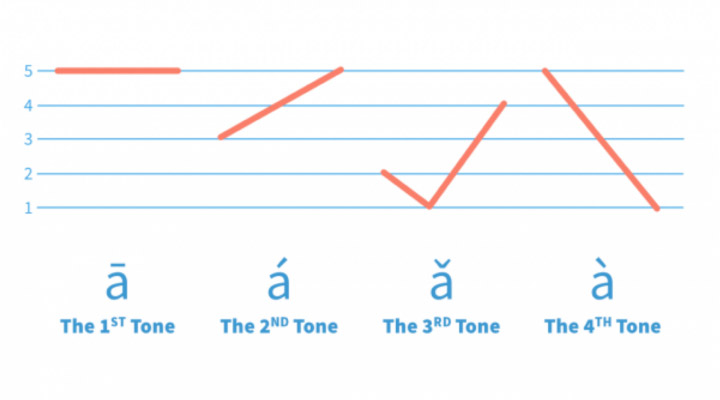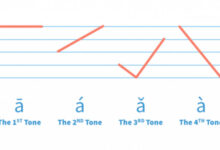
Chinese Tones: The Role of the “Five Tone Levels” (五度标记)
When you first start to learn Mandarin online or work with an online Chinese teacher, one of the earliest challenges you face are the tones. Chinese is a tonal language, meaning the pitch contour of a syllable changes its meaning entirely. For beginners, tones may feel abstract, but there is a good way to explain them, called the “five-degree pitch notation” system ( 五度标记).
This notation provides a visual way to see exactly how your voice should rise or fall, mapping tones on a scale from 1 (lowest) to 5 (highest). It’s like turning tonal pronunciation into sheet music for your voice.
In recent years, new linguistic tools and study resources have made systems like 五度标记 more accessible for learners of all ages. Connecting this to broader language study, it’s worth noting that the way Chinese evolves—new slang, internet terms, and even pronunciation shifts—can influence how tones are used in real life. If you want to stay ahead in your Mandarin journey, working with a trusted school like GoEast Mandarin can be a game-changer. With professional teachers, flexible scheduling, and personalized approaches, GoEast helps learners in Shanghai and around the world adapt not just to “textbook” Chinese, but to how the language truly sounds and feels today.
The beauty of 五度标记 is in its precision. Each of the four Mandarin tones—and the neutral tone—can be represented numerically. For example, the first tone is 55 (high and level), the second is 35 (rising), the third is 214 (dipping), and the fourth is 51 (sharp falling). The neutral tone is often marked with a shorter, lighter pitch contour. Seeing tones in this format helps learners anchor their pronunciation more accurately than just memorizing “high,” “rising,” “falling-rising,” or “falling.”
Historically, this pitch notation has its roots in phonetic studies and musical analogies, and while native speakers don’t consciously think about tone numbers, linguists and language teachers use it extensively. It’s particularly useful for understanding subtle differences between Mandarin spoken in different regions, where the actual pitch height might vary but the relative contour remains the same.
What is interesting is that Chinese language schools like GoEast Mandarin dwell on these aspects in a helpful way. In general, it is good for students to have their teachers incorporate such into lessons so that they get an idea of how the tones work, even if students may find their own way of viewing them.
Integrating 五度标记 into daily practice is worth it. It transforms tone learning from a vague listening exercise into a concrete, visual, and measurable skill.








